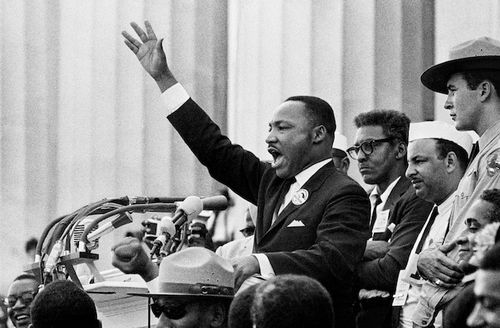What determines a successful social movement? What affects real social change?
A political scientist will say that it’s when someone with power takes up your cause, that’s when you can really get things to change. A cynic might say money is what causes change. Someone who’s more religious might say change happens when God softens people’s hearts. All of these are probably at least a little bit true, but maybe there’s something else.
The Reformation was a tumultuous period of change for the European people. If we examine its origins, we can discover a few important things about social change.
First, it doesn’t happen suddenly. Ideas that emerged in the Renaissance, especially humanism, laid the foundations for the Reformation. Without the individualism of humanism and the concepts of everyone being of value and worth listening that it proposed, maybe no one would’ve listened to Martin Luther. Maybe he wouldn’t have had the ideas he had. Humanism led to a shift in people’s perspectives that opened them up to different possibilities.
Second, it’s not peaceful. Change and newness are uncomfortable. For the explorers and their new worlds, it was physically uncomfortable. Social change is emotionally and mentally uncomfortable, so people push back against that. The clashes between Catholics and Protestants are a good example of that. Of course, these conflicts were also tied up in deeply personal religious beliefs, but there is an element of hanging onto the old and going back to what is comfortable-- ad fontes, in a slightly different sense.
Martin Luther gives a speech before the Diet of Worms.
Third, new technology matters a lot when trying to advance a social movement. The invention of the printing press did two things: it allowed information to be disseminated much more quickly, and it allowed more people to circulate their ideas, not just the very elite. Because of the printing press, Martin Luther was able to express his views, and spread those to lots and lots of people.
These ideas come into play for a lot of different social movements, but one that especially comes to mind is that of the Civil Rights Movement.
Martin Luther King, Jr. gives a speech at the National Mall.
It certainly didn’t happen suddenly; there were a great many pieces that had to come together in order for the Civil Rights Movement to be successful. It definitely wasn’t peaceful; there are multitudes of images of people being tear gassed and attacked by police dogs and even killed for their participation in this social movement. And new technology played an important part in its success. Radio and television meant the Civil Rights Movement took place on a national stage in a way no movement really had before. Everyone had a front-row seat to the horror and brutality of segregation, and the hope and inspiration espoused by Dr. Martin Luther King, Jr.
It may not be possible to conclusively say what makes a difference in a social movement’s success, what brings society to the tipping point where something has to give. But it is, at the very least, fascinating to look at the similarities between events that happened so far apart, yet still have so much in common. People aren’t really that different.




No comments:
Post a Comment